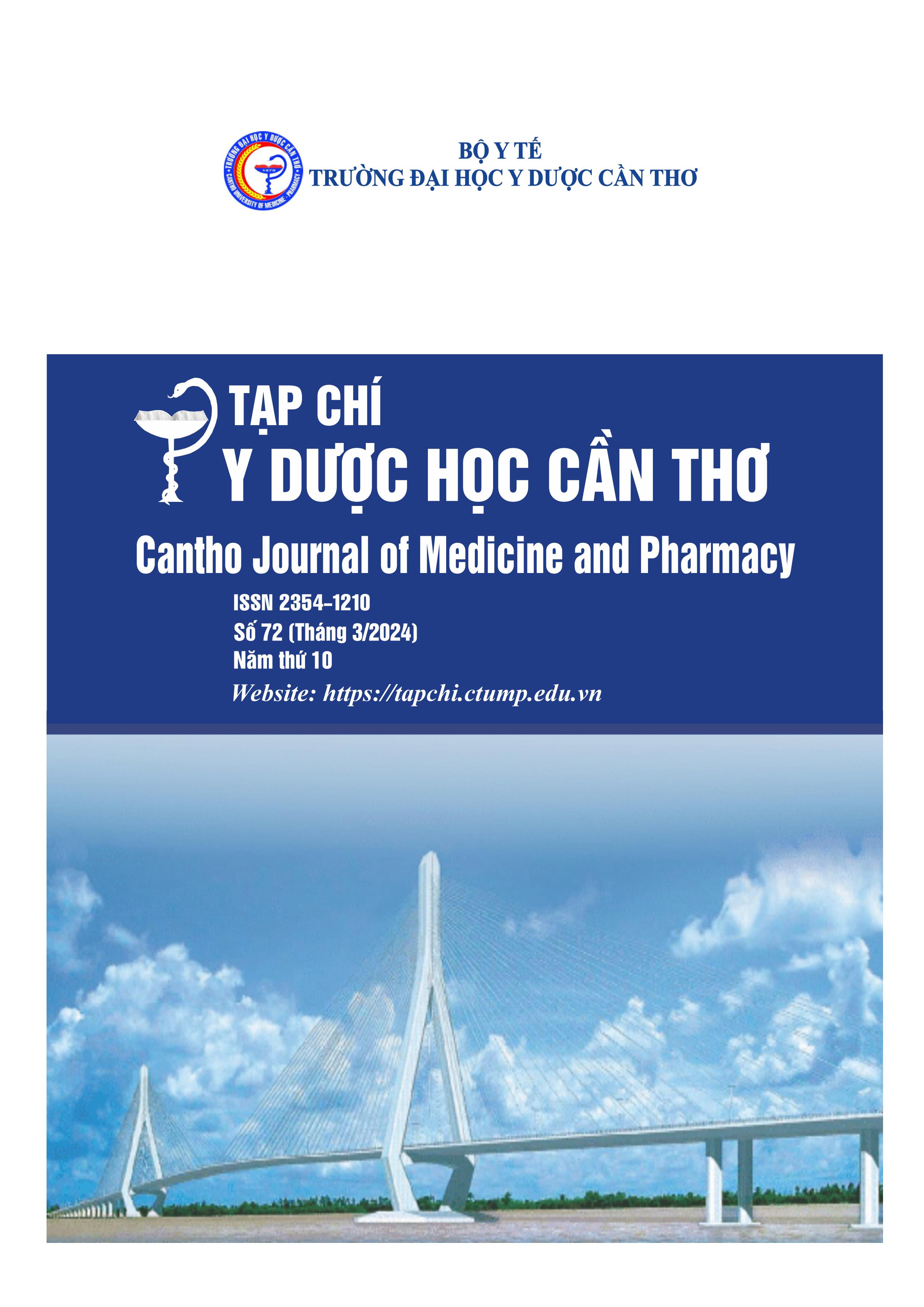IDENTIFICATION OF PINK1 AND PRKN MUTATION IN PARKINSON’S DISEASE PATIENTS
Main Article Content
Abstract
Background: Parkinson's disease is a common neurodegenerative disorder in the elderly after only Alzheimer's. The disease is due to the selective degeneration of substantia nigra dopaminergic neuron, resulting in a decrease in dopamine content, affecting the transmission of nerve signals for muscle contraction. Molecular biology techniques have proven that genetic factors play a crucial in the progression of Parkinson's disease. Objectives: To identify mutations of the PINK1 gene and PRKN gene in Parkinson’s disease patients by Sanger sequencing method. Materials and methods: 30 patients with a confirmed diagnosis of Parkinson's according to the criteria of the United Kingdom Parkinson’s Disease Society Brain Bank. Direct sequencing method was used to identify PINK1 gene and PRKN gene mutations. Results: 13.33% of cases had PINK1 gene and PRKN gene mutations, with 3 different mutations. All of the mutations belong to heterozygous and most of them are nucleotide substitutions. Conclusions: 3.33% of cases had PINK1 gene mutations, 10.0% of cases had PRKN gene mutations. 02 patients carried the c.1010G>A(p.Cys337Tyr) mutation, 01 patients carried the c.823C>T(p.Arg275Trp) on the PRKN gene; 1 patient carried the c.1273C>T(p.Pro425Ser) mutation on the PINK1 gene. The result of evaluating the influence on the protein function of c.1010G>A(p.Cys337Tyr) mutation on the PRKN gene by in silico tools was “pathogenic.
Article Details
Keywords
Parkinson’s disease, mutation, PINK1 gene, PRKN gene
References
2. Fahn S, Sulzer D. Neurodegeneration and Neuroprotection in Parkinson Disease. NeuroRX. 2004. 1(1), 139-154. doi:10.1602/neurorx.1.1.139.
3. Deng H, Wang P, Jankovic J. The genetics of Parkinson disease. Ageing Res Rev. 2018. 42, 72-85. doi:10.1016/j.arr.2017.12.007.
4. Fleming SM. Mechanisms of Gene-Environment Interactions in Parkinson’s Disease. Curr Environ Health Rep. 2017. 4(2), 192-199. doi:10.1007/s40572-017-0143-2.
5. Quinn PMJ, Moreira PI, Ambrósio AF, Alves CH. PINK1/PARKIN signalling in neurodegeneration and neuroinflammation. Acta Neuropathol Commun. 2020. 8(1), 189. doi:10.1186/s40478-020-01062-w.
6. Klein C, Djarmati A, Hedrich K, et al. PINK1, Parkin, and DJ-1 mutations in Italian patients with early-onset parkinsonism. Eur J Hum Genet EJHG. 2005. 13(9), 1086-1093. doi:10.1038/sj.ejhg.5201455.
7. Klein MO, Battagello DS, Cardoso AR, Hauser DN, Bittencourt JC, Correa RG. Dopamine: Functions, Signaling, and Association with Neurological Diseases. Cell Mol Neurobiol. 2019. 39(1), 31-59. doi:10.1007/s10571-018-0632-3.
8. Kann M, Jacobs H, Mohrmann K, et al. Role of parkin mutations in 111 community-based patients with early-onset parkinsonism. Ann Neurol. 2002. 51(5), 621-625. doi:10.1002/ana.10179.
9. Sun M, Latourelle JC, Wooten GF, et al. Influence of heterozygosity for parkin mutation on onset age in familial Parkinson disease: the GenePD study. Arch Neurol. 2006. 63(6), 826-832. doi:10.1001/archneur.63.6.826.
10. Valente EM, Abou-Sleiman PM, Caputo V, et al. Hereditary early-onset Parkinson’s disease caused by mutations in PINK1. Science. 2004. 304(5674), 1158-1160. doi:10.1126/science.1096284.
11. Schulte C, Gasser T. Genetic basis of Parkinson’s disease: inheritance, penetrance, and expression. Appl Clin Genet. 2011. 4, 67-80. doi:10.2147/TACG.S11639.
12. Ton ND, Thuan ND, Thuong MTH, et al. Rare and novel variants of PRKN and PINK1 genes in Vietnamese patients with early-onset Parkinson’s disease. Mol Genet Genomic Med. 2020. 8(10), e1463. doi:10.1002/mgg3.1463.
13. Venselaar H, te Beek TA, Kuipers RK, Hekkelman ML, Vriend G. Protein structure analysis of mutations causing inheritable diseases. An e-Science approach with life scientist friendly interfaces. BMC Bioinformatics. 2010. 11(1), 548. doi:10.1186/1471-2105-11-548.


